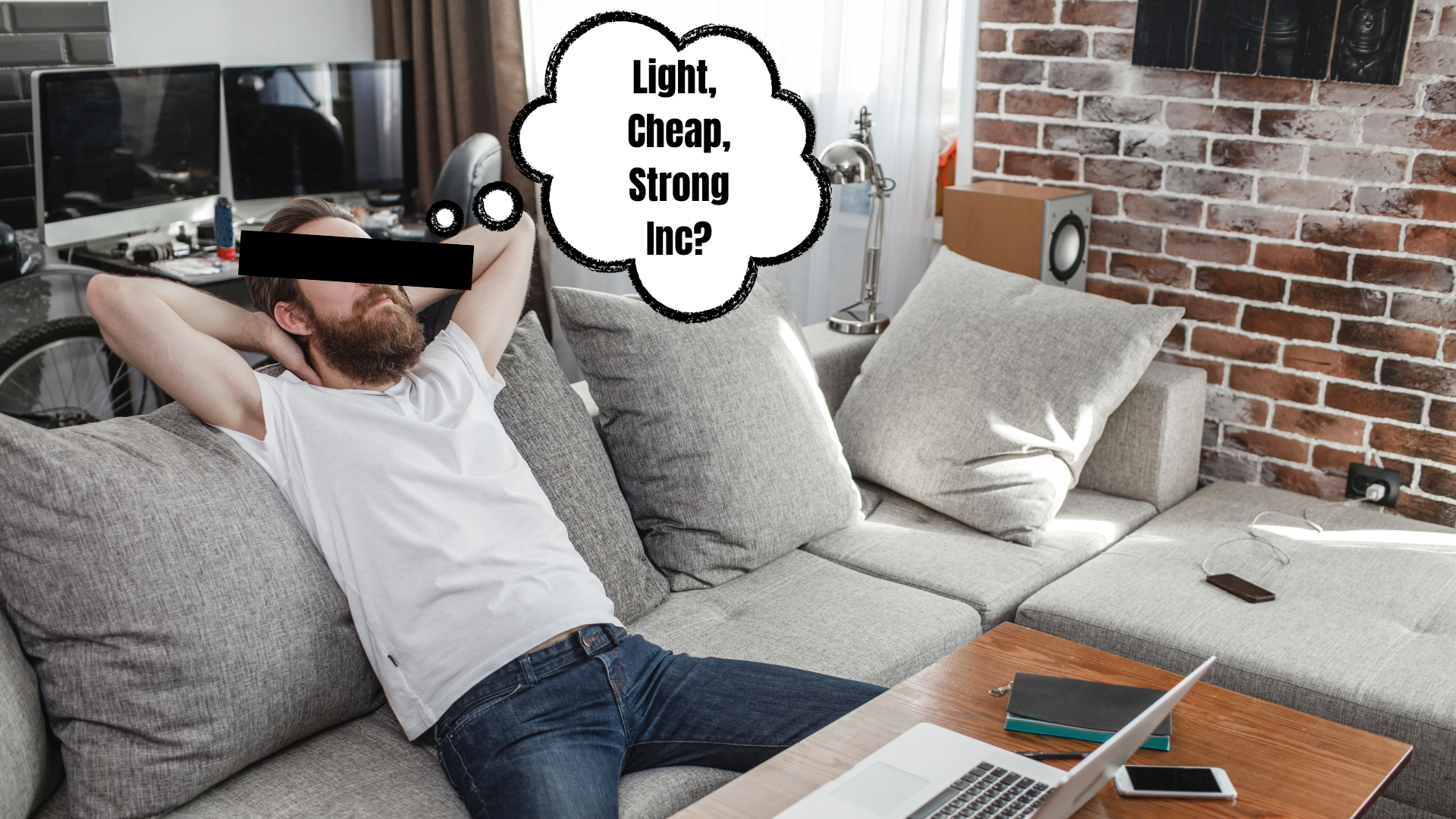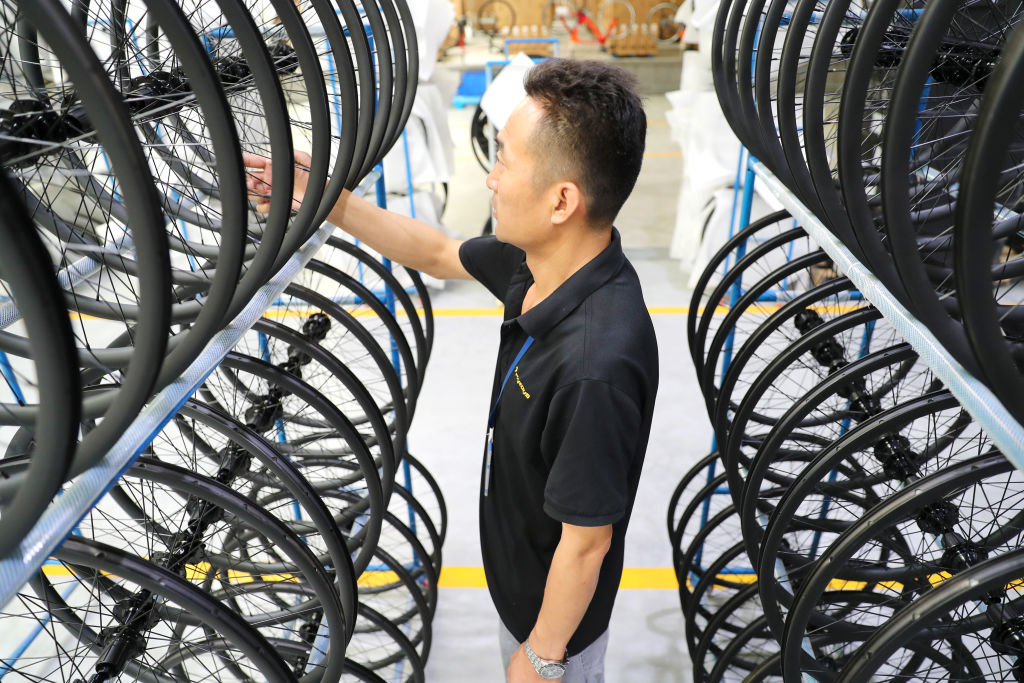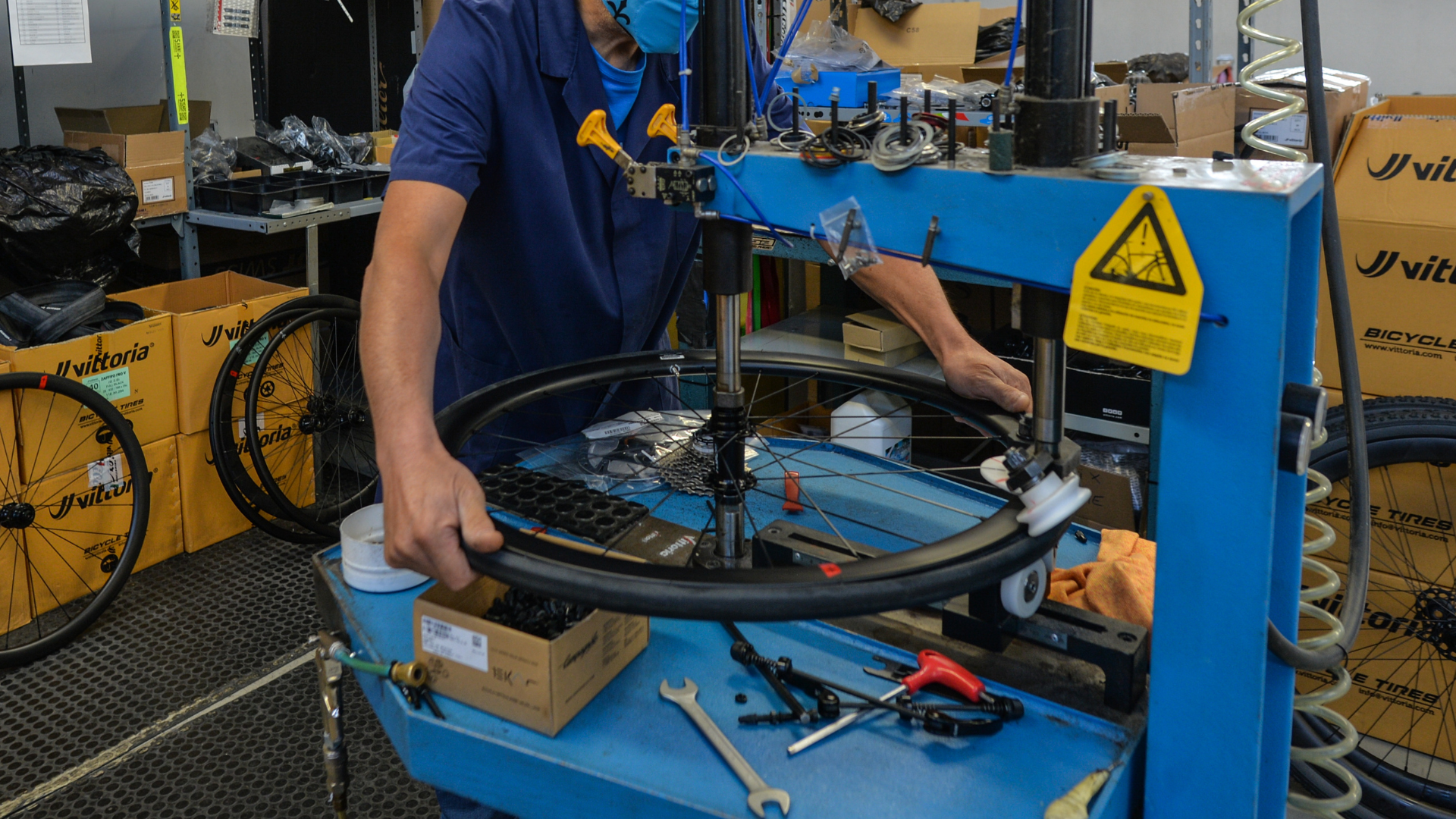
It’s often said that after the frame, the wheels make the biggest difference to your ride comfort and performance. I would agree with that, to an extent. However, tyre volume and pressure probably have more influence on how a wheel feels than anything else.
The biggest problem that consumers face when choosing a wheelset is the wall of marketing spiel that they are required to wade through, to get to their purchase. In recent years, there has been an explosion of start-up brands, all saying that they have spent months or years, quite literally, reinventing the wheel. The first thing we normally do when one of these new brands emerges is flick through the Taiwan Bike Source book (or app these days, take a look on the app store), to see if these have been plucked straight from the page.
The simple truth is that it's relatively cheap to buy a batch of wheels or components from the Far East and badge them up with some fancy logos. This is not to say that some brands aren't doing great things, but, I could launch a wheel company from my sofa in the space of 30-minutes, and many consumers would be hard pressed to tell the difference.
To try and help you cut through the drivel which exists in pockets across bicycle wheel world, I thought I would try and explain what to look for in a good wheel. If you don’t understand the basics of what makes a wheel, It’s almost impossible to know how to spend your money.
Cost
When talking to a client, I would usually edge towards this consideration, but let’s go there straight away: what is your budget, bearing in mind you’re probably going to need new tyres and potentially cassette and rotors (circa £500/$600)?
The most common thing we get asked for is a pair of light, strong, carbon rimmed wheels for £1,000/$1,200. There are several brands selling these, often accompanied by very persuasive advertising campaigns. If the aesthetic of the wheel is all you’re bothered about, go for it. If you want to ride your wheels in anything other than the sunniest of days and have them last a reasonable length of time, take a moment to think about that purchase. Keith Bontrager is often credited with coming up with the phrase “light, strong, cheap: pick two.” This certainly pertains to bicycle wheels.
Our normal advice is that if your budget is £1,000/$1,200, spend £700/$900 on a really good set of aluminium rimmed wheels with excellent quality (and lighter) hubs, spokes and nipples, then treat yourself to a topflight set of the best tyres. This will give you a far lighter system weight, and more longevity in your purchase then stumping up for a cheap set of plastic hoops. We normally advise that the basement price for a set of carbon rimmed wheels, that would be any better than a £700/$900 set of aluminium wheels, is £1,500/$1,900.
Rims

The usual focus of attention when buying a wheel is the rim. For carbon rims, currently I would say 40mm deep seems to be the standard and 21mm internal width is the most common on modern wheels.
Hooked or hookless I’ll leave for another article - 1000 words is not enough to get into this [watch this space! - Ed]. These days we rarely see 'Dangerously Bad Rims'. Most rebranded wheelsets are typically using rims from one of about three factories anyway, and they are fairly ubiquitous apart from the graphic design.
Spokes and nipples
Working our way towards the centre the next components are the spoke nipples. These maintain the tension on your spoke, and are your only means of adjusting the spoke tension if your rim goes out of true. On cheap wheels, this is always the first area where cost is saved. A big selling point of wheels is their overall weight, so brands often fit aluminium nipples which are far less robust than brass nipples, which are heavier to the tune of ‘blowing your nose’. This isn’t an area I would skimp on.
Cheap aluminium nipples round off as soon as you start to reach high tensions and corrode galvanically, when in contact with stainless spokes unless you’re very careful in the build preparation, which cheap wheel manufacturers aren’t. There’s one very well marketed wheel brand where we consistently see the aluminium nipples crumble to dust, after as little as 700-miles. Chatting to their warranty department, the standard response is to replace them with brass nipples. The reason they don't fit these in the first instance is that nobody would buy the wheels if they weighed an extra 50g, and that's where education comes in.
"When asked why they don’t just fit brass nipples in the first place, they say nobody would buy the wheels if they weighed the extra 50g."
Next in line are the spokes. Good quality spokes are vital when you think about how they work. Essentially you are hanging off of the rim via the uppermost two or three spokes, so they need to be strong enough to take the entire weight of your system. These are typically made from stainless steel although other materials such as titanium, aluminium and carbon fibre have been used.
My main point of advice here is simple: when buying a wheel set, check that replacement spokes are available. A good quality stainless steel J-bend spoke will always be available. We recently serviced a wheel set that used carbon spokes and three years after being sold they were no longer available from the reseller. Sapim spokes are generally regarded by most wheel builders as the gold standard for stainless steel spokes with DT Swiss a close second.
I have always preferred J-bend spokes over straight pull, as they flex in a much better way and tend to last longer. I would argue that straight pull spokes came into existence to make it quicker and cheaper to build wheels, rather than any performance gain.
Hubs
Finally, we come to the hubs. There are three main differences these days in hubs. Firstly, the bearing type. The majority of hubs these days use sealed bearings rather than cup and cone, and it’s one of the areas where brands often save money, by fitting cheap non contact seal bearings. These make the wheels spin nicely when new, but don’t keep any dirt or cleaning fluids out. Also a quick word on ceramic bearings: if you’re using these, they do need more maintenance and regular cleaning and re-lubricating with the correct grease. Well looked after, they could last forever, but we see a prevalence of ceramic bearings trashed after a year’s use, as they have been neglected.
The next main difference is flanged or straight pull. We prefer flanged because it puts less stress on the head of the spoke when it flexes.
Finally, you have the engagement mechanism of the free hub. Classically, this was a pall and ratchet system. Hubs that use this system, have tried to make it better by increasing the numbers of palls. However, this tends to be counterproductive, as the manufacturing accuracy (or lack of) means that the palls don’t engage simultaneously, loading one side of the hub fractionally before the other, which twists the hub shell and trashes the bearing much quicker.
A much better system is a clutch ring arrangement such as the design from DT Swiss or Chris King. Interestingly, the patent from DT Swiss for their Ratchet system recently lapsed, which is why there are now several new copycat hubs entering the market. In conversation with the guys from DT Swiss, they didn’t seem too worried about this, as the spring tension that took them years to develop was not detailed in their patent.
Your hub houses all of the moving parts within the wheel, so this is the bit that will wear out. That’s why it’s vital you are able to get spare parts for it. My advice when looking at any wheel brand, is to take a look at what spare parts are available and how far back in the wheel range they go. Again, I’ve got no vested interest in promoting DT Swiss, but its hubs are a best seller for us, because their design hasn’t changed dramatically in almost a decade and they stock and sell every spare part required going back to the dawn of time.
The bottom line

So “what are the best wheels to buy?” I hear you ask. The answer to this is really simple: it’s the wheelset best suited to your needs. Don’t buy an off the shelf set of wheels designed to suit 99% of the population, most of your cash will go to funding the gigantium marketing budget required to differentiate them from the identical competition.
Visit your local, well regarded wheel builder, and get them to build you a set of wheels, appropriate to your weight, riding style and intended use. I guarantee these will be cheaper, lighter and stronger than the off the shelf versions of the same quality.







